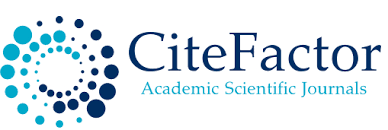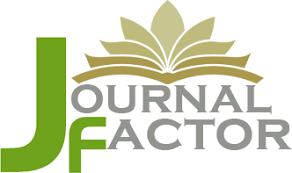Hypocalcaemia among children up to two years old in children Tripoli hospital
DOI:
https://doi.org/10.54361/ljmr.v8i1.12Abstract
Hypocalcaemia is a state when serum calcium levels are < 7 mg/dl in preterm neonates and < 8 mg/dl in term neonates and < 8.5 mg/dl in older children. Prospective analytical study was performed in children, < 2 years, who admitted in Hospital with hypocalcaemia or discovered hypocalcaemia during admission. Biochemical serum investigations from the patients (S. Ca, Ph, alk ph, Mg, Hb, PTH, Urea and S. Cr) and X. ray of left hand wrist. 63 children (44 boys, 19 girls) the difference was statistically significant and age ranging from one day to 2 years with mean age of 5 ± 5.6 months, 46% of the patients are exclusive breast feeding and 41.4% of them are symptomatic at age between 6 to 12 months of age and most of bottle feeding babies (90%) are symptomatic early below 6 months of age. Most of the patients presented with abnormal movement (85.7%) and 12.7% are asymptomatic. 1.6% of the patients presented with bow legs, 14% of the patients were preterm, all of preterm patients are significantly presented early than term patients and 16% of the patients are IUGR, and they are significantly presented early and about 6% of the patients are infant of diabetic mother and significantly presented early, 73% of the mothers are multipara and 27% of the mothers are primigravida, 93.8% of primigravida mothers had normal. Serum calcium was compared with 80.5% of multiparty mothers; the difference was statistically not significant. All the patients had low serum calcium levels but serum phosphorous levels varied and about alkaline phosphatase, 62.7% of patients have high and 37.3% have normal serum alkaline phosphates, about 61% have high serum PTH. 37% have normal serum PTH and 2% have low serum PTH, 66.7% of breast feeding and 6.1% of bottle feeding patients have ricketic x-ray changes, this is not significant. 88.9% of babies of hypocalcemic mothers have ricketic bone changes; most of the babies of hypocalcemic mothers are presented early 77.8% less than 6 months of age. Thus, infants under 2 years of age are liable to have vitamin D deficiency rickets particularly if they are exclusively breastfed with reduced exposure to sunlight, seizures are the most important presented symptom of hypocalcaemia.
Downloads
References
Gertner JM. Disorders of calcium and phosphorus homeostasis. Pediatr Clin North Am. 1990, 37, 6: 1441-1465.
Richard E, Behrman MD, Kliegman RM and Jenson HB. Metabolic bone disease Nelson textbook of Pediatric. 1996, 2342.
Jackson GL, Sendelbach DM, Stehel EK, et al. Association of hypocalcaemia with a change in gentamicin administration in neonates. Pediatr Nephrol. 2003, 18; 7: 653-656.
Richard E, Behrman, MD, Kliegman RM and Jenson HB. Nelson textbook of Pediatric Pathophysiology of body fluids and fluid therapy hypocalcemia pathophysiology. 1996, 197.
BinMohanna MA, Raja'a YA and Saif GA. Prevalence of hypocalcemia in children examined for serum calcium in Sana'a, Yemen. Saudi Med J. 2005, 26; 8:1313-1314.
Knuckey T, O'halloran MT and Yu SJ. Hypocalcaemia in infancy: A retrospective study. J Pediatr Child Health. 1971, 1440-1754.
Ann King Edward Med Coll. Hypocalcemia and nutritional rickets in children: common etiological factors, Pakmedinet. 2006; 12, 1: 29-32.
Balasubramanian S, Shivbalan SO and Kumar PS. Hypocalcemia due to vitamin D deficiency in exclusively breastfed infants. Indian Pediatr. 2006, 43: 247-251.
Bonyata K. Calcium breastfeeding and parenting. Nutrition, vitamins and calcium comparison. 2006, 10.
Neonatal hypocalcaemia MERCK the Merck manuals online medical library.
Manandhar DS, Hunt MCT and Mohamed MI. A Study of Convulsions in childhood in department of Pediatrics, Al-Jahra Hospital, Kuwait. Medical Principles Practice, Med Principles Pract. 1989, 1: 208-213.
Nozza JM and Rodda CP. Vitamin D deficiency in mothers of infants with rickets. Med J Australia MJA. 2001, 175: 253-255.
Adegbehingbe OO, Adegbenro CA, Awowole IO, Tomori PO and Oyelami OA, Perception and knowledge of mothers on causes and treatment of rickets associated knee deformity in Ile-Ife, Osun State, Nigeria. Tanzania J Health Res. 2009, 11; 1: 40-45.
Sergio D, Gina L, Elena B, Fabio M and Marini A. Early hypocalcemia and indices of bone turnover in very low and extremely low birth weight infant's data. Pediatr Res. 1998, 44; 3: 443.
Salle B, David L, Glorieux F, Delvin EE, Louis JJ and Troncy G. Hypocalcemia in infants of diabetic mothers. Interscience. 1982, 2227.
Downloads
Published
Issue
Section
License
Copyright (c) 2014 Fatma Yedder, Faten Ben Rajab, Laila T. Sebai (Author)

This work is licensed under a Creative Commons Attribution-NonCommercial-NoDerivatives 4.0 International License.
Open Access Policy
Libyan journal of medical Research (LJMR).is an open journal, therefore there are no fees required for downloading any publication from the journal website by authors, readers, and institution.
The journal applies the license of CC BY (a Creative Commons Attribution 4.0 International license). This license allows authors to keep ownership f the copyright of their papers. But this license permits any user to download , print out, extract, reuse, archive, and distribute the article, so long as appropriate credit is given to the authors and the source of the work.
The license ensures that the article will be available as widely as possible and that the article can be included in any scientific archive.
Editorial Policy
The publication of an article in a peer reviewed journal is an essential model for Libyan journal of medical Research (LJMR). It is necessary to agree upon standards of expected ethical behavior for all parties involved in the act of publishing: the author, the journal editorial, the peer reviewer and the publisher.
Any manuscript or substantial parts of it, submitted to the journal must not be under consideration by any other journal. In general, the manuscript should not have already been published in any journal or other citable form, although it may have been deposited on a preprint server. Authors are required to ensure that no material submitted as part of a manuscript infringes existing copyrights, or the rights of a third party.
Authorship Policy
The manuscript authorship should be limited to those who have made a significant contribution and intellectual input to the research submitted to the journal, including design, performance, interpretation of the reported study, and writing the manuscript. All those who have made significant contributions should be listed as co-authors.
Others who have participated in certain substantive aspects of the manuscript but without intellectual input should only be recognized in the acknowledgements section of the manuscript. Also, one of the authors should be selected as the corresponding author to communicate with the journal and approve the final version of the manuscript for publication in the LJMR.
Peer-review Policy
- All the manuscripts submitted to LJMR will be subjected to the double-blinded peer-review process;
- The manuscript will be reviewed by two suitable experts in the respective subject area.
- Reports of all the reviewers will be considered while deciding on acceptance/revision or rejection of a manuscript.
- Editor-In-Chief will make the final decision, based on the reviewer’s comments.
- Editor-In-Chief can ask one or more advisory board members for their suggestions upon a manuscript, before making the final decision.
- Associate editor and review editors provide administrative support to maintain the integrity of the peer-review process.
- In case, authors challenge the editor’s negative decision with suitable arguments, the manuscript can be sent to one more reviewer and the final decision will be made based upon his recommendations.











